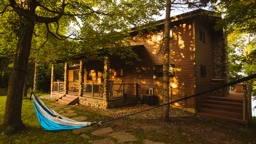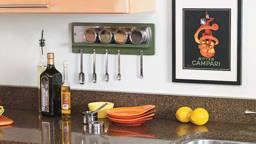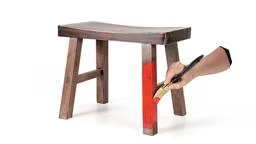
Building a kayak is something almost anyone can do whether or not he/she has any woodworking experience or even knows the difference between strip and plywood construction. If you’re looking for a good shoulder season project to do in your garage or boathouse before it’s time to open up your camp, or you’re game for a continuing education experience that will end with a covetable keepsake, consider building your own kayak.
For first-timers, experts recommend two ways to tackle building your own kayak: a kit or a class.
See also How to Build a Cabin Debt-Free
Have a Kit, Can Build
The advantages of choosing a kayak kit are: tried and true design, pre-measured and pre-cut pieces and, importantly, customer support – including written directions and live troubleshooting when you hit a snafu.
The two primary types of kayak kits are strip construction and plywood construction. Your choice may be guided by the type of water where you’ll paddle as much as your own aesthetic preferences. Hard chine boats (those with visible angles built into the hull at the waterline or below) generally excel in rough conditions, and they are typically made using plywood.
Smooth or rounded hull boats tend to perform best in quiet water like lakes, and are most often built with strip construction. There are some hybrid boats, like Newfound Woodwork’s Navigator, Explorer from plywood with hard chines, and the deck uses strip construction. Strip construction boats have a timeless appeal but are more time consuming to build.
Once you’ve settled on style, shop around for a good kit package. When you’re considering which kit to buy, make sure to ask what’s included and what else is needed. Typical items that might be included in a kit are the wood (preferably pre-coved and beaded, or prepared for easy linking together), fiberglass cloth, epoxy resin, forms (the cross section pieces), a strongback (box beam that holds all the pieces together), cockpit combing (the cockpit rim), bulkheads, varnish and application supplies like squeegies, vinyl gloves and rollers.
Often with boat kits you do get what you pay for. A lower priced kit may mean that you have to buy extra parts, negating any initial cost savings. Also ask the vendor if they offer phone and/or e-mail support. And, determine if the kit requires power tools, which, if you don’t own them, you may have to purchase or rent.
Michael Vermouth, owner and president of Newfound Woodworks, who has been making and selling kayak kits for 23 years, says the keys to success with any kit are to read through all the directions before you start (Newfound boats come with kit instructions as well as DVDs and a book) and to resist being overwhelmed by the project.
The most common mistake that first time builders make? Mixing the second batch of epoxy before they’re done applying the first. “Take one step at a time,” said Vermouth, “and don’t get ahead of yourself. Ninety percent of the kits we sell go to first time boat builders, many of whom are also first time woodworkers.”
The two primary types of kayak kits are strip construction and plywood construction. Your choice may be guided by the type of water where you’ll paddle as much as your own aesthetic preferences. Hard chine boats (those with visible angles built into the hull at the waterline or below) generally excel in rough conditions, and they are typically made using plywood.
Smooth or rounded hull boats tend to perform best in quiet water like lakes, and are most often built with strip construction. There are some hybrid boats, like Newfound Woodwork’s Navigator, Explorer from plywood with hard chines, and the deck uses strip construction. Strip construction boats have a timeless appeal but are more time consuming to build.
Once you’ve settled on style, shop around for a good kit package. When you’re considering which kit to buy, make sure to ask what’s included and what else is needed. Typical items that might be included in a kit are the wood (preferably pre-coved and beaded, or prepared for easy linking together), fiberglass cloth, epoxy resin, forms (the cross section pieces), a strongback (box beam that holds all the pieces together), cockpit combing (the cockpit rim), bulkheads, varnish and application supplies like squeegies, vinyl gloves and rollers.
Often with boat kits you do get what you pay for. A lower priced kit may mean that you have to buy extra parts, negating any initial cost savings. Also ask the vendor if they offer phone and/or e-mail support. And, determine if the kit requires power tools, which, if you don’t own them, you may have to purchase or rent.
Michael Vermouth, owner and president of Newfound Woodworks, who has been making and selling kayak kits for 23 years, says the keys to success with any kit are to read through all the directions before you start (Newfound boats come with kit instructions as well as DVDs and a book) and to resist being overwhelmed by the project.
The most common mistake that first time builders make? Mixing the second batch of epoxy before they’re done applying the first. “Take one step at a time,” said Vermouth, “and don’t get ahead of yourself. Ninety percent of the kits we sell go to first time boat builders, many of whom are also first time woodworkers.”
Take a Class
“There are people out there who aren’t confident opening up a box and starting from scratch on their own,” said Rich Hilsinger, Director of WoodenBoat School’s educational programs, held on the Maine coast. “Or, you may not have the tools, or the space to build a boat at home. Taking a boat building class is a learning vacation.”
Typically, courses last a week, and at the end, participants go home with a brand new wooden boat. “All you really need to be successful is a little bit of curiosity and at least a week’s worth of enthusiasm,” said Hilsinger.
Newfound Woodworks also offers one-day classes as an add-on to their build-at-home kits. In a one day course, Vermouth takes students through each part of the process on boats that are in process at the company’s headquarters in Bristol, N.H.
Typically, courses last a week, and at the end, participants go home with a brand new wooden boat. “All you really need to be successful is a little bit of curiosity and at least a week’s worth of enthusiasm,” said Hilsinger.
Newfound Woodworks also offers one-day classes as an add-on to their build-at-home kits. In a one day course, Vermouth takes students through each part of the process on boats that are in process at the company’s headquarters in Bristol, N.H.
Build a Kayak - Camp for Kids
For the young aspiring boat builder in your household, consider Lake Champlain Maritime Museum’s Champlain Discovery program, a one-month long camp where teens spend two and a half weeks building a hard chine plywood construction boat – and two weeks paddling their new rigs from Whitehall, N.Y. to Burlington, Vt. on Lake Champlain.“It challenges kids in a supportive environment,” said Nick Patch, Director of Outdoor Education at the Lake Champlain Maritime Museum. “It gives teens a sense of responsibility for their own safety, builds life skills, teaches teamwork, and it’s an adventure.” The camp accepts ten students each summer for the $2,950 course. Scholarships and assistance in arranging local housing are available.
Whether it’s a child or an adult building a kayak, “there is nothing that can replace the satisfaction of building something with your own hands,” Hilsinger said. “In a world where we sit in front of computers all day, and things are done for us instead of by us, building a boat is a very satisfying experience.”
Writer, photographer and adventurer Berne Broudy will start building her own kayak as soon as she finishes building her woodshop – as her husband didn’t appreciate epoxy resin on the couch during the last project.










